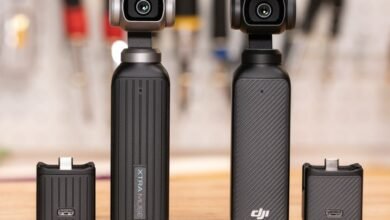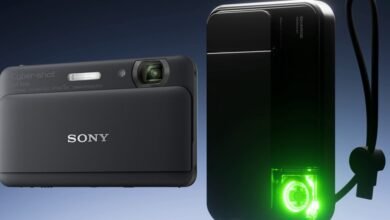Xbox Ally and Ally X Review: More Than Just an Xbox

▼ Summary
– The Xbox Ally and Ally X handhelds fail to deliver a seamless console-like experience due to their reliance on Windows 11, which complicates setup, navigation, and gameplay.
– Both models suffer from significant software issues, including buggy performance, unresponsive controls, and unreliable sleep modes, particularly in the cheaper Xbox Ally.
– The Xbox Ally X offers better performance and battery life than the Ally, but both are outperformed by competitors like the Steam Deck OLED in benchmarks.
– Microsoft’s Xbox Full Screen Experience interface is incomplete and not optimized for gamepad navigation, making it less user-friendly than rival systems.
– The handhelds are positioned as expensive beta products, with the $599 Ally and $999 Ally X requiring further software updates to meet expectations.
For gamers seeking a true plug-and-play console experience, the new Xbox Ally and Ally X handhelds may not deliver on that promise. These devices, launching tomorrow, run a full version of Windows 11 rather than offering a streamlined, dedicated gaming interface. While they aim to blend Xbox and Windows into a cohesive portable system, the reality falls short of expectations for those wanting immediate, hassle-free gameplay.
The fundamental issue lies in their operating system. Both the $599 Xbox Ally and $999 Xbox Ally X require navigating Windows 11, complete with its lengthy setup procedures, mandatory updates, and desktop-oriented quirks. This means you won’t simply press a power button and jump into a game. The process involves wrestling with drivers, BIOS updates, and a touchscreen interface that feels awkward for a handheld. Furthermore, these devices cannot natively play Xbox console games, they are limited to PC ports or cloud streaming. When Grand Theft Auto VI releases next year without a PC version, you won’t be playing it here directly.
Microsoft and Asus have introduced the Xbox Full Screen Experience (FSE), intended to create a console-like environment by hiding the desktop and allowing navigation via gamepad. In practice, however, this interface feels sluggish and only partially realized. Many units shipped to reviewers lacked the final FSE software, requiring hours of updates before any gaming could begin. Even after configuration, the UI often fails to respond properly to controller inputs, forcing users to interact with the touchscreen for basic tasks.
On a positive note, the hardware design offers some commendable features. Both models are comfortable to hold despite weighing around 1.5 pounds, thanks to their well-contoured grips. The front-facing speakers provide impressive audio quality with clear stereo separation. Each unit includes clever cardboard packaging that doubles as a useful stand. The 7-inch display offers a 1080p resolution, 120Hz refresh rate, and 500-nit brightness, though its bezels appear dated compared to competitors like the Steam Deck OLED.
Performance varies significantly between the two models. The premium Ally X, equipped with an AMD Ryzen Z2 Extreme processor, 24GB memory, and an 80Wh battery, delivers respectable gameplay in demanding titles. Users can achieve approximately two hours in intensive games like Indiana Jones and the Great Circle by adjusting to low settings with upscaling enabled. Less demanding games such as Balatro can provide nearly eight hours of battery life. The device supports fast charging up to 100W via USB-C.
The Ally X demonstrates a crucial improvement in sleep functionality, when powered down, it generally stays asleep without randomly waking or draining the battery. This addresses a longstanding frustration with Windows handhelds. Unfortunately, the cheaper Xbox Ally model suffers from severe sleep issues, frequently waking unprompted and depleting its battery overnight.
Performance testing reveals concerning results for the base model. The $599 Xbox Ally, featuring an AMD Ryzen Z2 A chip, often trails behind the two-year-old Steam Deck OLED by approximately 13% in frame rate comparisons. Even when plugged into power, it struggles to outperform its established competitor, raising questions about its value proposition.
Microsoft has implemented some thoughtful software enhancements. The dedicated Xbox button enables quick task switching and window management using only the gamepad. For Xbox ecosystem users, cloud save synchronization works seamlessly between the handheld and Xbox consoles, particularly with Xbox Play Anywhere titles. The redesigned Game Bar interface provides controller-friendly access to system settings without entering the desktop environment.
However, the overall user experience feels unpolished. Button layouts prove confusing, with similarly shaped buttons performing drastically different functions. The Control Center widget frequently becomes unresponsive during background updates. Navigation within the Xbox interface remains cumbersome, lacking intuitive controller support for basic actions like scrolling through lists. The system exhibits various bugs, including applications losing focus and requiring touchscreen intervention, alongside occasional crashes not seen in competing handhelds.
Microsoft positions these devices as platforms for ongoing innovation, with promised features like automated game profiles and enhanced save synchronization arriving post-launch. Yet at their current prices, making them the most expensive Xbox-branded devices ever, they feel like expensive beta tests rather than finished products. While the Ally X shows potential for dedicated Xbox enthusiasts, most consumers would be better served waiting for software refinements and potential price adjustments before considering these ambitious but unpolished handhelds.
(Source: The Verge)





